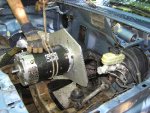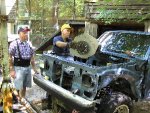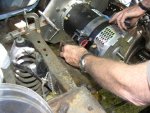EVconverter
New Member
Thank you Krugford... yes an interesting read on the tailgate aerodynamics, I have some ideas for this Ranger, but the guy sponsoring our build is into airplanes and such, so he has the last word on body aerodynamics. We are probably going to close in the underside, at least for the battery box. And when it is done he wants to lower the hood, probably Corvettish from how I read his "hands in the air" description...
AS far as placing the motor to rear you should check this wikipedia page http://en.wikipedia.org/wiki/Ford_Ranger_EV
Ford mounted the electric motor transversely, with a transaxle transmission...
And that is one of the reasons I am considering replacing the rear suspension with a four link and maybe the 8.8 axle from a lincoln town car (as suggest on TRS axle page) or F 150 axle. That allows more room for batteries on the outside of the frame, with a side crash bar of course...
ALSO Since I am new to this site and new to blogging in general and Since I created my posting before I found Dwinmacs, and since I see 36 people have checked my post but no replies and since it is the same subject... What's the proper thing to do? Delete that post? reference it over here ... http://therangerstation.com/forums/showthread.php?t=324
move it over here?
I'm just barely computer literate... and prone to run on sentences
AS far as placing the motor to rear you should check this wikipedia page http://en.wikipedia.org/wiki/Ford_Ranger_EV
Ford mounted the electric motor transversely, with a transaxle transmission...
And that is one of the reasons I am considering replacing the rear suspension with a four link and maybe the 8.8 axle from a lincoln town car (as suggest on TRS axle page) or F 150 axle. That allows more room for batteries on the outside of the frame, with a side crash bar of course...
ALSO Since I am new to this site and new to blogging in general and Since I created my posting before I found Dwinmacs, and since I see 36 people have checked my post but no replies and since it is the same subject... What's the proper thing to do? Delete that post? reference it over here ... http://therangerstation.com/forums/showthread.php?t=324
move it over here?
I'm just barely computer literate... and prone to run on sentences

















